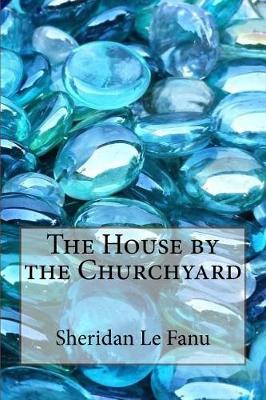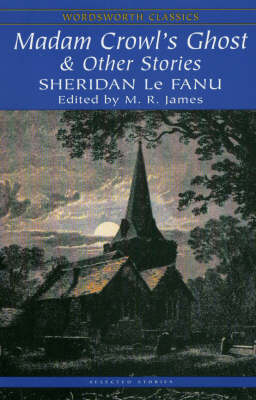Tales of Mystery & The Supernatural
3 total works
I thought I saw a human face, about the most terrible my fancy could have called up, looking fixedly into the room. The face gazed towards the bed, and in the imperfect light looked like a livid mask, with chalky eyes'.
Master of the ghost story genre M.R. James commented that the, 'final terrific murder-scene and escape can hardly be forgotten' by those who have read Uncle Silas. Neither does the opening disappoint. As the November winds wail in ivied chimneys we are drawn into a Victorian Gothic atmosphere of menacing, sombre gloom and ebony shadows. Sheridan Le Fanu leaves us in no doubt that we are in for a feast of exciting drama, luring us into the intensely claustrophobic world of the nineteenth century sensational novel.
Le Fanu is amongst the top-notch exponents of the creepy, the criminal and the oppressive. In this tale of the orphaned teenage heiress Maud Ruthyn, fearing for her life at the hands of her sinister uncle, he has created a rattling good plot with the depth of a social novel and the power of high romance.
Master of the ghost story genre M.R. James commented that the, 'final terrific murder-scene and escape can hardly be forgotten' by those who have read Uncle Silas. Neither does the opening disappoint. As the November winds wail in ivied chimneys we are drawn into a Victorian Gothic atmosphere of menacing, sombre gloom and ebony shadows. Sheridan Le Fanu leaves us in no doubt that we are in for a feast of exciting drama, luring us into the intensely claustrophobic world of the nineteenth century sensational novel.
Le Fanu is amongst the top-notch exponents of the creepy, the criminal and the oppressive. In this tale of the orphaned teenage heiress Maud Ruthyn, fearing for her life at the hands of her sinister uncle, he has created a rattling good plot with the depth of a social novel and the power of high romance.
Joseph Sheridan Le Fanu is best known today as one of the Victorian period's leading exponents of supernatural fiction, and was described by M.R. James as standing 'absolutely in the first rank as a writer of ghost stories'.
The House by the Churchyard is perhaps his best novel in this genre. Set in the village of Chapelizod, near Dublin, in the 1760s the story opens with the accidental disinterment of an old skull in the churchyard, and an eerie late-night funeral. This discovery relates to murders, both recent and historical whose repercussions disrupt the complacent pace of village affairs and change the lives of many of its notable characters forever. Charm and chilling darkness abound in equal measure in one of the greatest novels of a Victorian master of mystery.
The House by the Churchyard is perhaps his best novel in this genre. Set in the village of Chapelizod, near Dublin, in the 1760s the story opens with the accidental disinterment of an old skull in the churchyard, and an eerie late-night funeral. This discovery relates to murders, both recent and historical whose repercussions disrupt the complacent pace of village affairs and change the lives of many of its notable characters forever. Charm and chilling darkness abound in equal measure in one of the greatest novels of a Victorian master of mystery.
This title is edited by M.R. James. In 1888 Henry James wrote 'There was the customary novel by Mr Le Fanu for the bedside; the ideal reading in a country house for the hours after midnight'. "Madam Crowl's Ghost & Other Stories" are tales selected from Le Fanu's stories which mostly appeared in "The Dublin University Magazine" and other periodicals, and their haunting, sinister qualities still have an enormous appeal for the modern reader. The great M.R. James, who collected and introduces the stories in this book, considered that Le Fanu 'stands absolutely in the first rank as a writer of ghost stories.'


